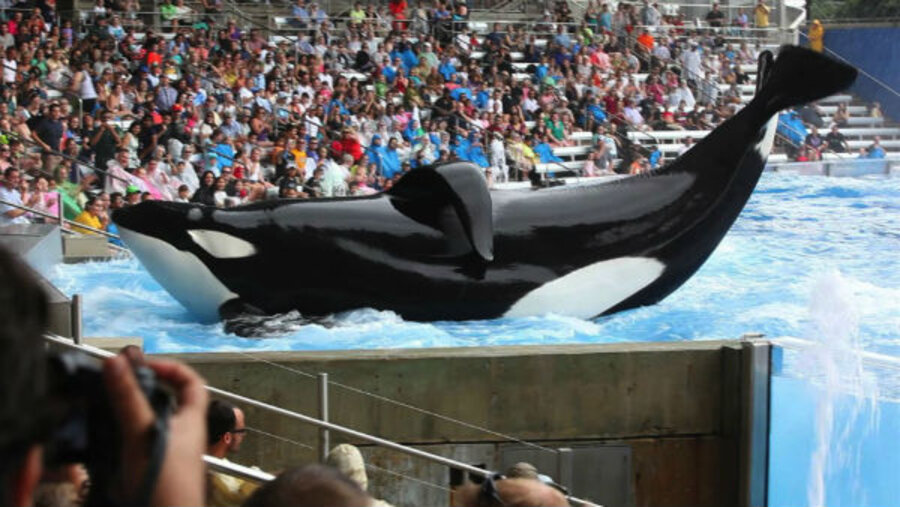'Blackfish' concerns aside, animal parks still good for kids
Loading...
I've long considered zoos and animal parks to be "animal jails." This doesn't represent any principled stand against animal suffering (as a lifelong non-vegan, I'm vulnerable on that front), but rather a dislike of the general "free creatures penned up" vibe and a quite-possibly overly empathetic imagination.
A new film, however, is putting fuel on the flame of those who harbor lingering suspicion of the practice of charging money in return for exhibiting captive animals. "Blackfish" raises questions about SeaWorld: namely, whether its practices are humane for the animals, and safe for handlers and animals alike. In the process, it raises larger questions about animals in captivity everywhere.
The film presents quotes and perspectives like this one shared on CNN:
"I am not at all interested in having my daughter who is 3-and-a-half grow up thinking that it's normalized to have these intelligent, highly evolved animals in concrete pools," said John Jett, a former SeaWorld trainer, who said he grew increasingly concerned about the stressful conditions the animals were living under at SeaWorld. "I don't want her to think that's how we treat the kin that we find ourselves around on this planet. I think it's atrocious."
That said: While conditions, financial models, and effectiveness vary from zoo to theme park to circus, there are still a number of good reasons to keep taking your kids to them.
1. The parks have improved
Through accreditation work done over the decades by organizations such as the Association of Zoos and Aquariums, zoos and animal parks have been held to ever-evolving standards of animal welfare that reflect improving knowledge of animal habits and habitats. The number of animals stuck in concrete pits has declined over the years as more and more effort is taken to re-create – as best as is possible in captivity – the aspects of life in the wild that give animals satisfying lives. Terms like "ecological psychology" and "landscape immersion" reflect an interest in climbing beyond the very base of Maslow's hierarchy, a psychological theory of human motivation put forth by Abraham Maslow, and trying to satisfy some of the higher needs of animals and observers alike.
Outside pressure (from films like "Blackfish") can play a positive role, too. SeaWorld's response to the film "Blackfish" has been combative (this lively back-and-forth between SeaWorld and the filmmakers gives you a sense of the feisty tenor) but knowledge that outside observers care deeply about the welfare of captive animals – and are willing to write or make movies about it – can only up the pressure and stakes on organizations to get it right and keep moving forward.
2. They help animals in the wild
Animal parks (and their donors) represent motivated organizations that have a vested stake in preserving wild habitats and populations of animals. As a counterweight to poachers and developers, they're a critical voice on the scene.
3. They're legitimately educational
Book and Web searches are fine and dandy, but to really gain an appreciation for the miracle of biology that is an elephant, or octopus, or ostrich, it really helps to see one in the flesh. It gives the mind something concrete to hang all those fun facts and scientific observations upon, and it stirs the imagination, too. There are far worse ways to stimulate young minds than putting them in close proximity to an alien life-form, and letting them sort out all the differences between animals and people – and all the shared ground, too.
4. They help preserve endangered species
Saving threatened species takes time, money, and advanced educational training, and animal parks, zoos, and aquariums are among the few places that bring all those assets to bear on the problem of species extinction. To what extent is it OK to monetize another species? How about if some of the money goes to preserve its future? These aren't easy questions to answer, and they're loaded with shades of gray, but they give you a sense of the kind of calculations ethical zoos and other wildlife parks have to go through on a regular basis.
And beyond work done to preserve the long-term viability of species, animal parks also often serve as refuges for injured or otherwise vulnerable animals.
5. Visiting animal parks is a family-friendly activity
Few places are so tolerant of the antics and volume levels of kids as animal parks – it's a safe space for moms and dads who want to spend quality time with their excitable, moody, sometimes high-intensity little ones. Simply giving parents a place to decompress and hang out with their kids is a serious social benefit that shouldn't be overlooked.
So, how often will I be taking my son to the zoo? As infrequently as humanly possible, if I have any say in it. But if my zoo-loving wife wants to lead the charge, she's got my support.








